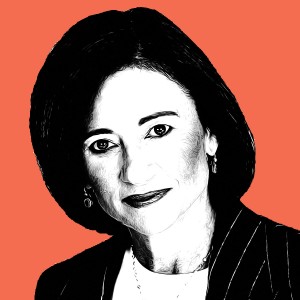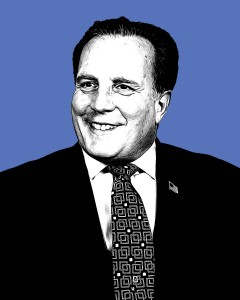Trending
Lending in a volatile time
Manhattan mortgage industry grapple with more competition, </br>complicated by new Dodd-Frank rules

The Manhattan residential mortgage lending industry faces a host of new challenges: More players entering the market, finding financing for foreign nationals, incorporating the changes introduced by Dodd-Frank and greater competition for jumbo loans among them.
As Rolan Shnayder of Citizens Bank sees it, the biggest test for the industry is when foreigners seek to buy numerous properties here. “If somebody buys a second home, well, that you can finance. If someone buys numerous properties here, finding them financing … has been challenging. Not impossible, but challenging.”
Firm new rules designed to make sure that homeowners avoid mortgages they can’t afford went into effect last year amid fear that the regulations, while well-intentioned, would squash the availability of credit and unsettle the housing market. Part of the Dodd-Frank financial reform law was the creation of a new category, called “qualified mortgages,” or QM, codifying the separation of prime loans from subprime, among a long list of other restrictions.
The federal rules and regulations associated with Dodd-Frank “have changed our industry more in the past few years than I can remember ever taking place,” said Art Saitta, assistant vice president at Ridgewood Savings Bank. As a result, potential borrowers fear their ability to obtain a mortgage. Some of that fear is misplaced, Saitta said. “Most buyers in the Manhattan market are very finance-savvy, and most of the borrowers we see in this marketplace have consistent forms of income.”
For more on those challenges and others, we turn to our experts.
Melissa Cohn
Independent Mortgage Consultant
What are some of the most notable trends in the mortgage industry now?
The most noticeable trend in the mort-gage industry now is the changing face of who the lenders are. In the past year, we have had many new lenders enter the New York City marketplace. Some have the sharpest pricing. Some are more willing to lend in buildings that don’t meet Fannie Mae/Freddie Mac standards. There are also new lenders that have mortgages to help qualify self-employed borrowers. With the onslaught of new lenders, all banks will be forced to be more competitive if they want to lend here.
This is the year that the Federal Reserve is finally expected to raise short-term interest rates. How do you think that will affect the mortgage market?
As rates go up, the refinancing market-place will dry up and buyers will have a lower borrowing capacity, reducing their purchasing power. We will have to see buyers accept that the rate will go up. Rates today are still historically low and will not go back to their high levels of past decades. As an aside, I started in the mortgage world in 1982 (I hate dating myself), and New Yorkers were buying and borrowing with one-year ARMs [adjustable-rate-mortgages] at 15 percent.

Melissa Cohn
Federal rules took effect a year ago designed to ensure that homebuyers avoid mortgages they can’t afford. Did the new rules have any impact on
the Manhattan market?
The new rules did impact the Manhattan market. All borrowers have to qualify with no more than 43 percent of their gross income. Payments on credit cards, depending upon the borrowers’ liquidity, can now be the full-outstanding balance, taking many out of the marketplace. In addition, qualifying for an interest-only loan has gotten much tougher, with borrowers having to qualify using a 20-year amortizing loan and not the significantly lower interest-only payment, once again eliminating more buyers. Banks have also raised the bar on minimum credit scores for the best rates. Very few exceptions are made today … aside from new portfolio lenders, who are more lenient.
Ben Bernanke, the former chairman of the Federal Reserve, revealed in October
that he had trouble refinancing his mortgage after he changed jobs. His past employment aside, how could someone with a high income have trouble
getting a loan?
With today’s guidelines, one has to be self-employed for two years in order to use that income, no matter how high it is. Bernanke earned a salary of about $200,000. Now he can make that much with just one or two speeches, but he has only been self-employed since January 2014 and has not yet filed a tax return validating his higher income. He is a year away from being able to use his new income level.
What’s the level of refinancing activity in New York City today and how does it compare to a year ago, and to the last couple of years in general?
Refinance volume in January 2015 surged to 51 percent of all volume, up from 43 percent in December 2014 and the low of 32 percent in July 2014. Today’s levels haven’t been seen since 2013.
What kinds of documentation do banks want to see now?
Banks today want everything except your shoe size. Banks look for two years of income verification. Pay stubs, W-2s and tax returns for the salaried buyer. Credit is also monitored more closely, with explanations required on all recent inquiries, and proof that no other credit was obtained. These rules are the toughest we have seen in the past few years.
What do lenders want to see when considering making a loan to a freelancer or small business owner?
As a self-employed borrower, banks require that you be in the same business and show income for the two-year period. If income is lower in the most recent year, the lower income is used. They may make an exception if a borrower remains in the same field of business and then may require less than two years. Banks will also look at income that may not be recurring and reduce income by that amount. This rule actually applies to all borrowers.
How is the mortgage industry doing compared to three months ago, six months ago, a year ago and the last few years in general?
The mortgage industry is doing much better in the past three months, with historically low rates. The last quarter of 2013 and the first half of 2014 were tough. This was a result of understanding the new lending standards and interest rates. Mortgage rates were three-fourths of a point lower at the end of 2014 than they were in January 2014.
Art Saitta
Assistant vice president, residential business development officer
Ridgewood Savings Bank
How much are mortgage issuances up or down by in NYC in general?
And how much are they up or down by at your company?
We have witnessed more lenders making mortgage products available in NYC during the past two years. We definitely had less competition up to two years ago with co-op loans and jumbo loans. National lenders are making co-op loans and more are making loans above $1.5 million, which is definitely needed in Manhattan and the outer boroughs.
This is the year that the Fed is finally expected to raise short-term rates.
How will that affect the mortgage market?
I have been in this business when rates were at 16 percent for a fixed-rate loan and the purchase-money business was steady. As a matter of fact, until the past seven years, the days when rates fluctuated between 9.75 percent and 10 percent were some of the busiest days I can remember.

Art Saitta
Did the Federal rules that took effect a year ago have any impact on the
Manhattan market?
The laws and regulations associated with Dodd-Frank have greatly impacted the residential lending arena. The disclosures and guidelines have changed our industry more in the past few years than I can remember ever taking place. The hype behind these changes has made many potential borrowers worried that they cannot obtain a mortgage; yet, many of those fears are unwarranted. Most buyers in the Manhattan market are very finance-savvy and most of the borrowers we see in this marketplace have consistent forms of income, substantial reserves, and see Manhattan as not only a good place to live but also a good long-term investment.
Mortgage applications have been flat in recent years while home sales have been on the rise. Can you help explain this disconnect?
Mortgage applications look flat or declining because our industry compares it to when the refinance boom was taking place. Purchase-money loans are on an increase and have been for more than the past year. It is true that there are fair shares of all-cash transactions, especially with foreign investors, but if you compare the purchase-loan business year-over-year, there definitely is a steady increase in business.
How is the mortgage industry doing in general?
In general, the mortgage industry has undergone tremendous flux. For many years, lenders were primarily closing refinance loans and not preparing for the surge to end, so when the refinance business slowed down, many lenders needed to lay off employees.
Rolan Shnayder
Loan officer, Citizens Bank
What are some of the most notable trends in the mortgage industry?
Banks are allowing loans to be done at higher-loan-to-value ratios, which means people put less down at higher loan amounts. Even on the jumbo mortgages, there are more and more banks allowing less percentage down. I’m seeing loan amounts at $2 million or $3 million with 10-to 15 percent down. This isn’t for everyone.
What are the biggest challenges facing the NYC mortgage industry today?

Rolan Shnayder
There have been a lot of foreign nationals making purchases here, and finding financing for those purchases has been a challenge. If somebody buys a second home, well, that you can finance. If someone buys numerous properties here, finding them financing for these numerous properties and investments has been challenging. Not impossible, but challenging, and the rates for those types of deals are higher than what people expect to pay because normally interest rates are low but not if you are buying property as a foreign national.
We keep hearing about the high number of NYC buyers paying all cash. But how common is it for those buyers to finance the purchase once the deal closes?
There is a misconception that if you sign an all-cash offer that means you have to actually show up to closing with all cash, which is not true. If you sign a contract that is an all-cash contract, all that means is that you have to show up to closing with all of the money. Whether that money comes from a mortgage or not is not regulated by your contract. If you don’t find financing and can’t close without it, you stand to lose your deposit. There are plenty of people that sign an all-cash contract and get a mortgage in order to purchase the home anyway. The buyer is still getting all cash, whether that’s from your bank account or from the bank, it doesn’t matter.
What kinds of down payments and documentation do banks want to see now?
And how does that compare to the last couple of years?
I think they are checking under every rock to try and find a reason to not do the deal, and I think it takes a sophisticated loan officer to know how to navigate the mortgage process.
Lenders loosened the rules governing jumbo loans last year. What types of borrowers now qualify who didn’t qualify in the past?
More banks are concentrating on the jumbo market. The thirst for jumbo mortgages has increased, whereas before most banks were just trying to do more conforming loans because they wanted to sell them off to Fannie Mae. Now banks are more interested in holding those jumbo loans on their own books.
Shaul Betesh
Senior vice president of mortgage lending, Guaranteed Rate

Shaul Betesh
What are the biggest challenges facing the NYC mortgage industry today?
Due to high housing costs here, most mortgages in New York City are jumbo, and requirements that were implemented last January call for additional scrutiny during the mortgage process. The other big challenge we face relates to co-op and condo approval. National loan guidelines can be difficult to conform to in Manhattan and Brooklyn, so ensuring that a loan is eligible requires both the pre-approval of the client and of the project, which can require our having to gather information from a management company.
If the Fed raises short-term interest rates, how do you think that will affect
the mortgage market?
If rates increase, it will reduce the number of refinance applications for the mortgage market, but may have a positive impact on the purchase market here. If rates go up, making it less desirable for some to purchase, [that] may offset the current lack of inventory.
Matthew Hackett
Operations manager, Equity Now
What are the biggest challenges facing the NYC mortgage industry today?
Condo projects face the biggest challenge when it comes to the New York City area. Due to the size of the agencies (Fannie Mae and Freddie Mac), condo project underwriting standards are general in nature, by necessity, and can miss the nuance of a building in New York City, where the original sponsor still owns more than 10 percent of the units, which are rented to [rent-] stabilized or controlled tenants. This can make it much more difficult for a borrower to qualify for conventional conforming guidelines, possibly pushing them to a local bank or into a [loan] product that may require a higher down payment or a higher interest rate.

Matthew Hackett
New federal rules designed to ensure that homebuyers avoid mortgages
they can’t afford took effect a year ago. Did the new rules have any impact
on the Manhattan market?
The new rules, most commonly referred to as QM/ATR, have had an effect on the Manhattan market. While it is true that many co-op boards have more stringent guidelines than banks regarding debt ratios and loan-to-value ratios, the documentation requirements and guidelines around QM/ATR are strict and sometimes difficult to interpret, causing ambiguity in the loan approval process. The inability to get comfortable with the risk of a particular product causes lenders to originate loans with an abundance of caution, reducing the availability of credit. It is noteworthy that these regulations have no ceiling, so they are applicable to a $10 million [loan] as well as a $100,000 loan.
Have the outer boroughs felt more of a squeeze from tighter lending?
The tighter lending environment may have affected the outer boroughs more, in the sense that property values tend to be lower and there is very little wiggle room for borrowers of “conforming” loan amounts, i.e. those that will be sold to Fannie Mae, Freddie Mac or insured by the FHA. There is still some leeway in the lending process for those with private banking relationships.
How could someone like Ben Bernanke, with a high income, have trouble
getting a loan?
There are a multitude of other issues aside from current income, which affect whether a borrower qualifies for a loan, and if we look at what Ben Bernanke was most likely bumping up against, it was income continuance. If he was leaving his current employer and did not have another employer lined up (and documented), then he would not have continuing income to pay the mortgage. While it may seem like common sense that Ben would quickly find another job with adequate income to pay his mortgage, federal regulations do not allow us such leeway.
Lenders loosened the rules governing jumbo loans last year. What types of borrowers now qualify who didn’t qualify in the past?
The loosening in jumbo guidelines has been primarily focused on down-payment requirements. A few years ago, loan amounts to $1.5 million would have required a 25 percent down payment, whereas they now require 20 percent, or in some cases, 10 percent down. There has also been a reduction in reserve requirements; whereas the above loan may have [once] required 18 months reserves, it now requires 12 or six months. The level of documentation, and the allowable debt-to-income ratio, has remained static, or even tightened, in some cases.
Brooke Jacob
CEO and chief loan officer, The Everest Equity Company
What are some of the most notable trends in the mortgage industry now?

Brooke Jacob
We’re seeing more first-time homebuyers – because homes are now more affordable than they’ve been in several years. Also non-conforming condos are now more financeable, because lenders have opened up to projects that were ineligible heretofore (e.g., incomplete projects, projects with only 35 percent pre-sales, projects with high percentage of investors — including one investor who owns more than 10 percent of units, etc.)
How could someone like Ben Bernanke, with a high income, have trouble
getting a loan?
This was a great story. The agencies’ employment guideline is that if a borrower is self-employed, he/she must have a two-year history of this self-employment. Fannie and Freddie are pretty stuck on this consistency test. When I told my family this story at the dinner table, my daughter asked, ‘Why would a former Fed Chairman not know the income guidelines?’ Great question, right? I told her he [probably] was looking for a wake-up call to the agencies. Bernanke’s loan denial increased awareness that there are many qualified borrowers who can’t get mortgages.
Which residential buyers in NYC are least likely to get loans these days?
And how has that changed in recent years?
A borrower with sufficient assets but who cannot document their income per guidelines. Until recently, stated-income products for high-net-worth borrowers was a great option, but with the introduction of QM and ATR guidelines in January 2014, these programs became unavailable.




